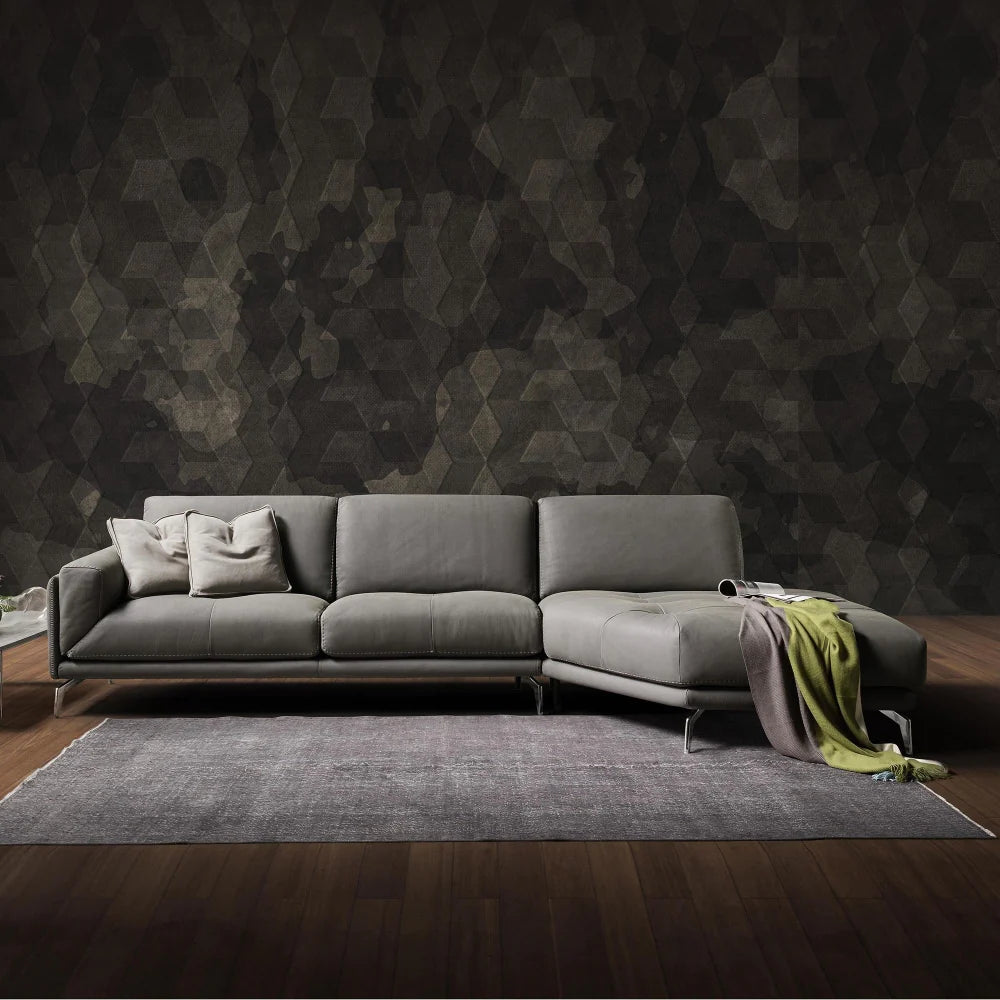The juxtaposition of Italian leather vs German leather unveils a captivating dialogue of craftsmanship and style. Renowned for centuries, Italian leather exudes an unparalleled elegance with its meticulous artistry and supple textures, often adorning luxury goods. On the other side, German leather stakes its claim with a reputation for precision and durability, embodying a robust aesthetic.
This exploration goes beyond a mere comparison of materials; it unfolds a narrative of heritage, cultural influences, and distinct artisanal approaches that shape these renowned leather traditions. Join us in unraveling the intricate tapestry of Italian and German leather, where each stitch tells a story of unparalleled excellence.
Why Is It Called “Italian Leather” And “German Leather"?
The terms "Italian leather" and "German leather" are rooted in the rich traditions and distinct characteristics of each country's leather craftsmanship. Italian leather signifies a style renowned for its meticulous artisanship, emphasizing luxury and supple textures. Italy has a long-standing history of leather production, dating back centuries, and its artisans have perfected techniques that lend a unique quality to their leather goods. In contrast, German leather carries connotations of precision and durability. Germany, too, boasts a storied heritage in leathercraft, with an emphasis on robustness and functionality.

The distinctions between Italian leather vs German leather echo the diverse approaches each nation takes in their tanning and crafting processes. Similarly, the comparison of Italian leather vs American leather highlights the nuanced differences arising from distinct cultural influences and craftsmanship techniques, contributing to the distinct reputations associated with each.
German Leather vs Italian Leather: What are the Differences?
Types Of Leather
Types Of Leather
Exploring what is the difference between italian leather and leather unveils a nuanced comparison that delves into the types of leather, craftsmanship and tradition, and the quality of tanning methods employed by these two renowned leather-producing nations. Firstly, the types of leather play a pivotal role in distinguishing the characteristics of German and Italian products. Germany is known for its production of high-quality vegetable-tanned leather, recognized for its durability and eco-friendly nature. Italian leather, on the other hand, boasts a diverse range, including the prized full-grain leather celebrated for its natural markings and premium quality.
Craftsmanship And Tradition
Craftsmanship and tradition form the heart of leather production in both Germany and Italy, yet each country brings its unique approach to the art. German craftsmanship is synonymous with precision and attention to detail, resulting in products that exude a robust and utilitarian aesthetic. Italian artisans, renowned for their passion and flair, infuse a sense of luxury and sophistication into their creations, marrying traditional techniques with contemporary design. This distinction is evident in the timeless elegance of Italian leather goods, exemplified by the exquisite hand-stitching and meticulous detailing that define their products.

Quality And Tanning Methods
Quality and tanning methods further underscore the disparities between German and Italian leather. Germany's commitment to vegetable tanning emphasizes a natural and environmentally conscious approach, ensuring the leather's longevity and resilience. Conversely, Italy's reputation for quality extends to its extensive use of traditional tanning methods, including vegetable tanning as well as chrome tanning. The meticulous process of tanning contributes to the rich patina and unique character that Italian leather develops over time, making it a sought-after choice for those who appreciate both style and substance.
Texture
Delving into the German leather vs Italian leather discourse reveals a significant contrast in texture. Italian leather is characterized by a distinctive, pebbled texture, contributing to its tactile allure. Conversely, German leather tends to exhibit a smoother texture, complementing its more uniform appearance. This divergence in texture further emphasizes the nuanced differences between these two renowned leather traditions.
Appearance
Italian leather boasts a naturally authentic appearance that sets it apart from German leather. This distinction arises from the fact that Italian leather is crafted from full-grain hides, preserving the inherent grain patterns. In contrast, German leather is typically derived from split-grain or corrected-grain hides, which lack the natural grain pattern, resulting in a more standardized and uniform appearance.

Industry Reputation
In terms of industry reputation, both German and Italian leather hold esteemed positions, albeit in different contexts. German leather is widely recognized for its engineering excellence and reliability, making it a preferred choice for industries requiring precision and durability. Italian leather, on the other hand, is synonymous with luxury, craftsmanship, and a rich heritage. The global fashion and design industries often gravitate towards Italian leather for its association with high-quality, handcrafted products that embody a sense of timeless elegance.
Italian Leather Vs German Leather: Which Is The Better Choice For Sofa?
Choosing between Italian leather and German leather for a sofa involves considering various factors to align with personal preferences and practical needs. Italian leather is renowned for its luxurious feel, meticulous craftsmanship, and diverse range of textures, making it an excellent choice for those seeking sophistication and comfort. The contemporary Italian leather sofa, in particular, represents a pinnacle of style and quality, often characterized by its supple texture and elegant design.
On the other hand, German leather is celebrated for its durability and robustness, making it a suitable option for those prioritizing resilience in their furniture. The choice ultimately depends on individual priorities—whether one values the plush comfort and refined aesthetics offered by Italian leather, as seen in the contemporary Italian leather sofa, or the sturdiness and utilitarian charm associated with German leather. Understanding the differences, including what sets Italian leather apart from standard leather, can guide consumers in making an informed decision that aligns with their lifestyle and preferences.
Conclusion
In the culmination of the comparison between Italian Leather and German Leather, it becomes evident that each tradition brings forth a distinct narrative of craftsmanship and cultural identity. Italian leather, with its emphasis on artistry and a rich heritage, emerges as a symbol of timeless elegance. On the other hand, German leather, synonymous with precision and engineering, reflects a commitment to functionality and durability.
As consumers navigate the choice between these two renowned traditions, considerations like the contemporary Italian leather sofa's allure and the nuanced interplay of Nappa leather vs Italian leather textures underscore the depth of choices available, inviting them into a world where cultural legacy and individual preferences seamlessly converge.





